Kutsinta (cuchinta) are Filipino steamed cakes made with flour, tapioca flour, and brown sugar. Soft, chewy, and topped with grated coconut, they're a delicious breakfast, snack, or dessert.
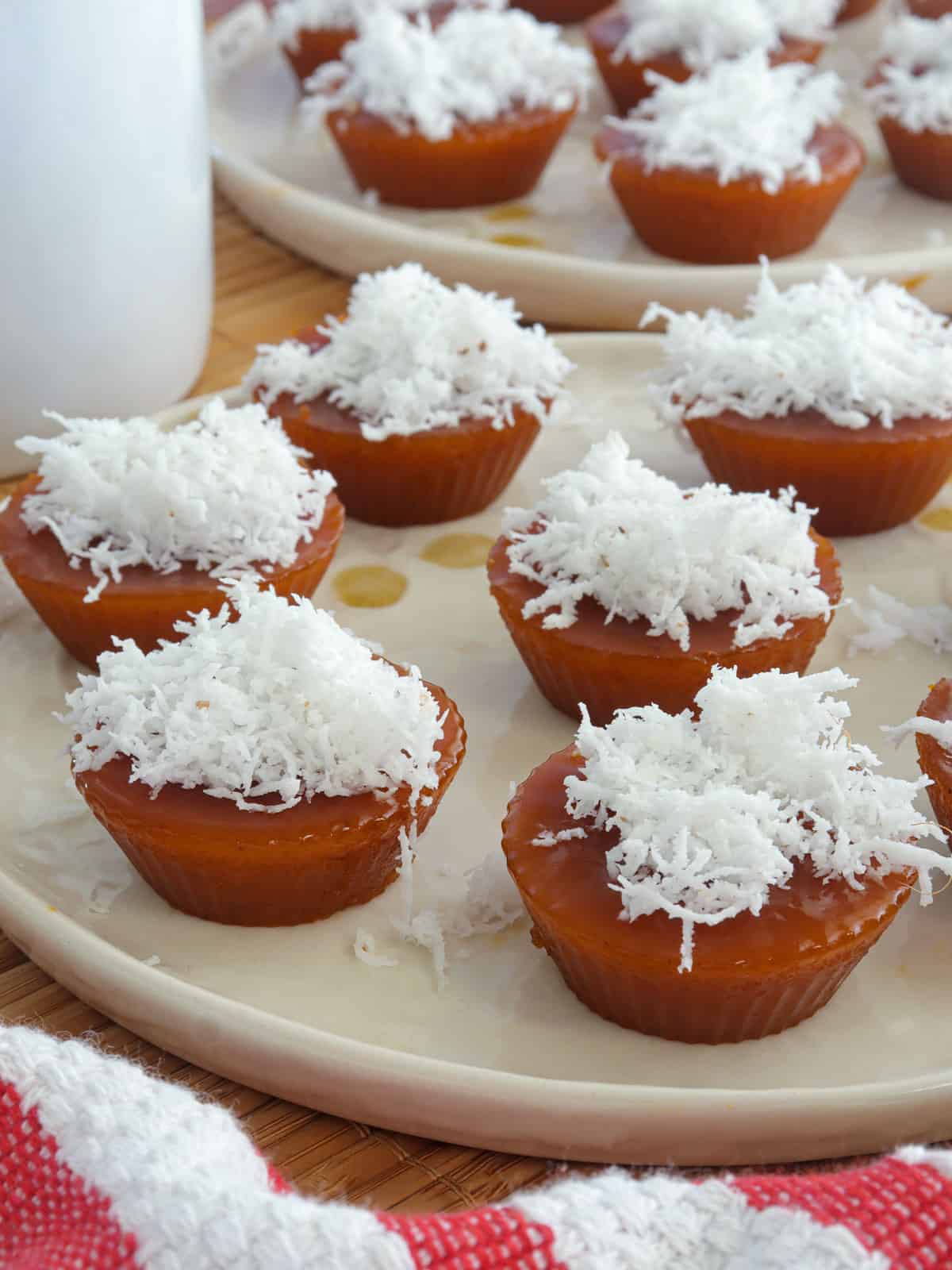
I've been looking for a good recipe for kutsinta or cuchinta since forever, but my search and kitchen experiments have been sorely disappointing. That was until last weekend, when my kumare posted on Facebook a picture of the kutsinta she made and how she finally nailed the recipe after two years of trial and error.
I was so excited reading her post that I PM'ed her as fast as my stubby fingers could type! I am unsure of the time difference between California and Vancouver, where she lives, but I was glad she replied with the recipe and had me on my kutsinta-making project in thirty minutes flat. Thank heavens for awesome friends 🙂
I made a couple of bites of the steamed cakes following her method, and I had to agree; she indeed nailed it! While most of the recipes I've encountered in the past use rice flour, her version uses all-purpose flour and tapioca flour, which, along with the addition of lye water, produces the soft and chewy texture I like.
Are you in the mood for more puto recipes? Try this easy Puto with tons of cheese and this Puto Lanson made of grated cassava. Enjoy!
Ingredient notes
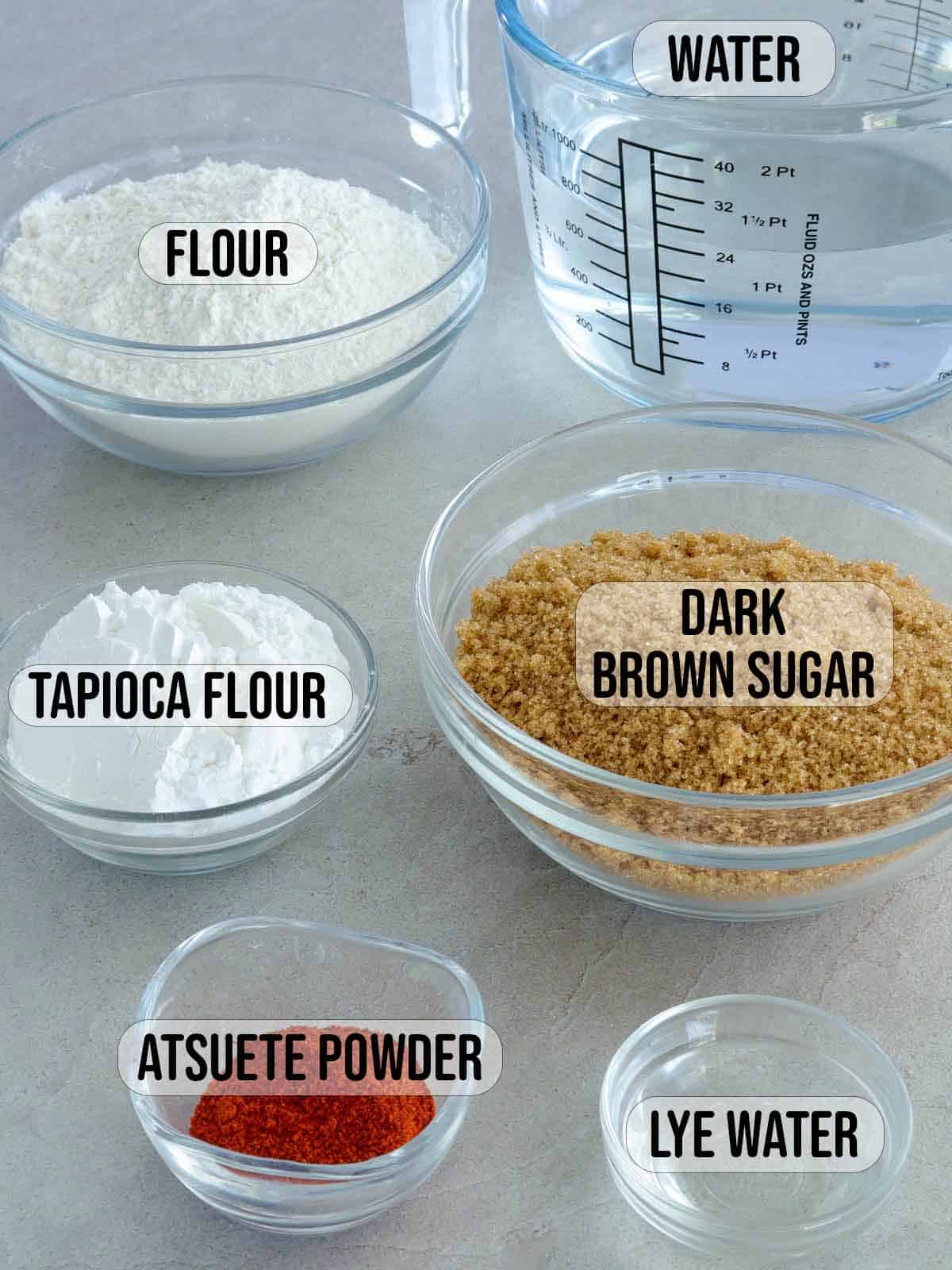
- Flour- the recipe uses a mixture of all-purpose and tapioca flour for a soft and chewy texture.
- Brown sugar- adds color and sweetness
- Water- the ratio of flour and liquid in the recipe yields the texture I like. Less water will result in a tougher cuchinta, and more water will create a softer consistency.
- Atsuete/annatto powder- enhances color. You can use more or less depending on the depth of color desired and the brown sugar used. Note that the color will deepen as the mixture cooks.
- Food-grade Lye water- locally known as lihiya. It softens the texture for a chewy texture and boosts color. Add sparingly as it can impart a bitter taste.
Kutsinta cooking process
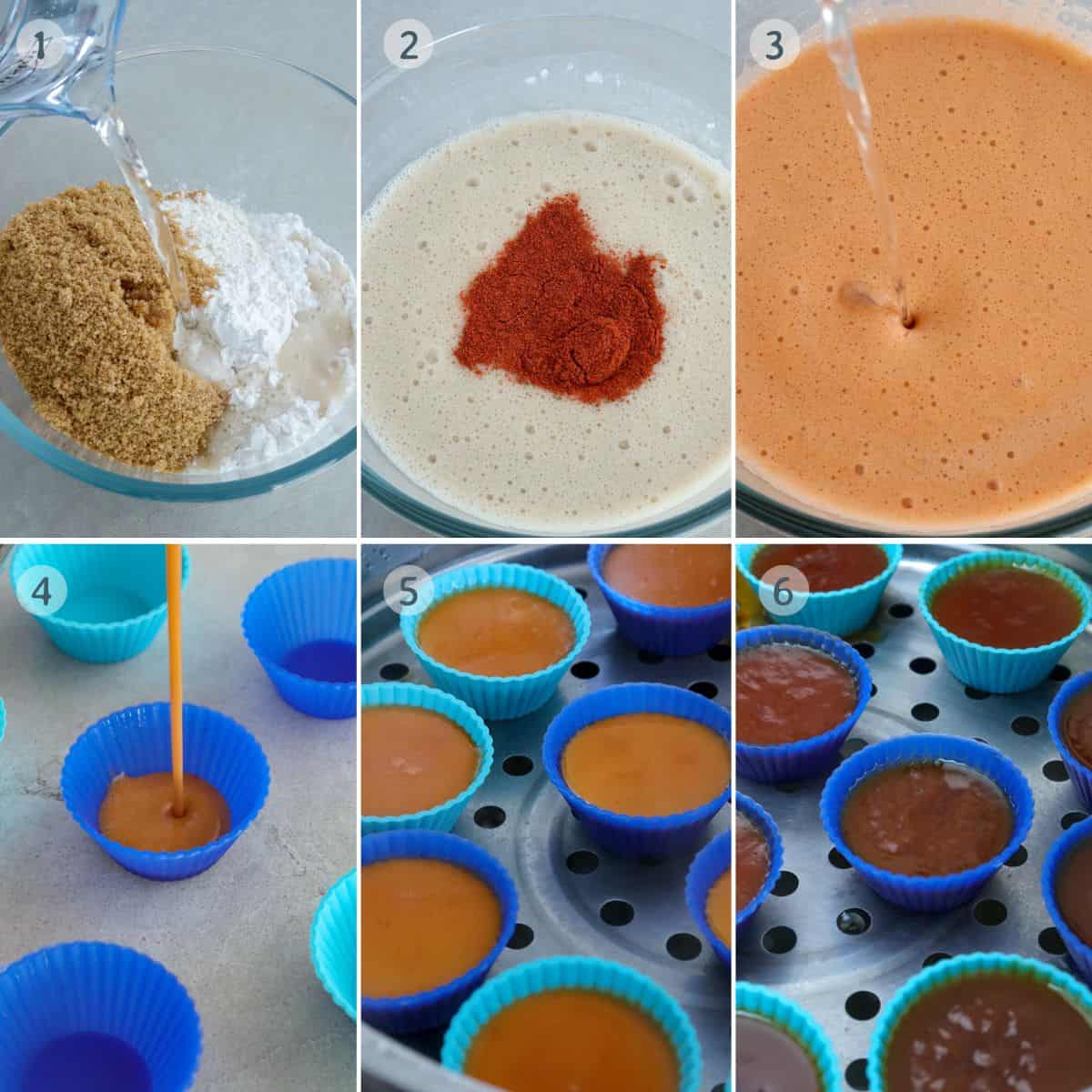
- Combine flour, tapioca flour, sugar, and water in a large bowl and stir well until dissolved and the mixture is smooth.
- Add atsuete and stir until well dispersed and the desired color is achieved.
- Add lye water and stir.
- Fill the silicone molds to about ¾ full. If using tin molds, lightly grease the insides with melted butter to make removing the steamed kutsinta easy.
- Fill the steamer with water and bring to a simmer. Arrange the filled molds in a single layer on the steamer basket and steam the kutsinta mixture until set.
- Remove from heat and allow to cool. Gently remove the steamed cakes from the molds and top with grated coconut.
Helpful tips
- Steam in a gentle simmer to prevent the kutsinta from sinking in the middle.
- These are mini-sized cuchinta; recipe yield depends on the size of molds you use.
- Stir the mixture before pouring it into the molds, as the flour tends to settle in the bottom.
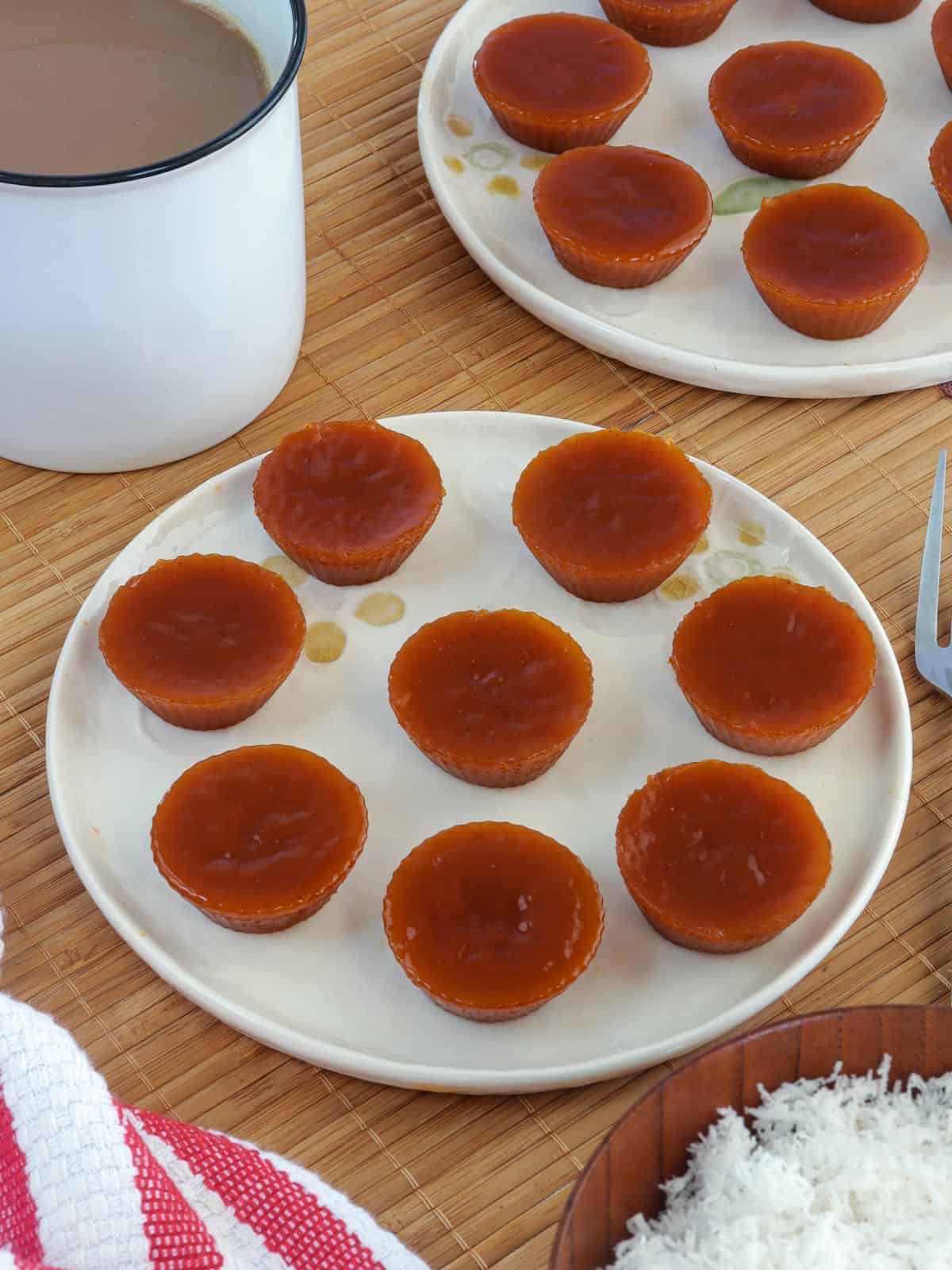
Flavor Variations
- Ube- use white sugar instead of brown sugar, skip the atsuete powder, and add a few drops of ube extract to the batter
- Black- use white sugar instead of brown sugar, skip the atsuete powder, and add a few drops of black food coloring to the batter
- Pandan- use white sugar instead of brown sugar, skip the atsuete powder, and add a few drops of pandan extract to the batter
Frequently Asked Questions
What lye water does in kutsinta?
Food-grade Lye water is a strong alkaline solution used in various cooking processes, such as curing and baking. It is a key ingredient in making kutsinta or pichi-pichi, as well as Chinese moon cakes, bagels, pretzels, and ramen noodles. It raises the pH level of the dough for a richer color and a springy texture.
If you prefer not to use lye or don't have access to it, you can read this article on using baked baking soda solution as an alternative.
How to serve and store
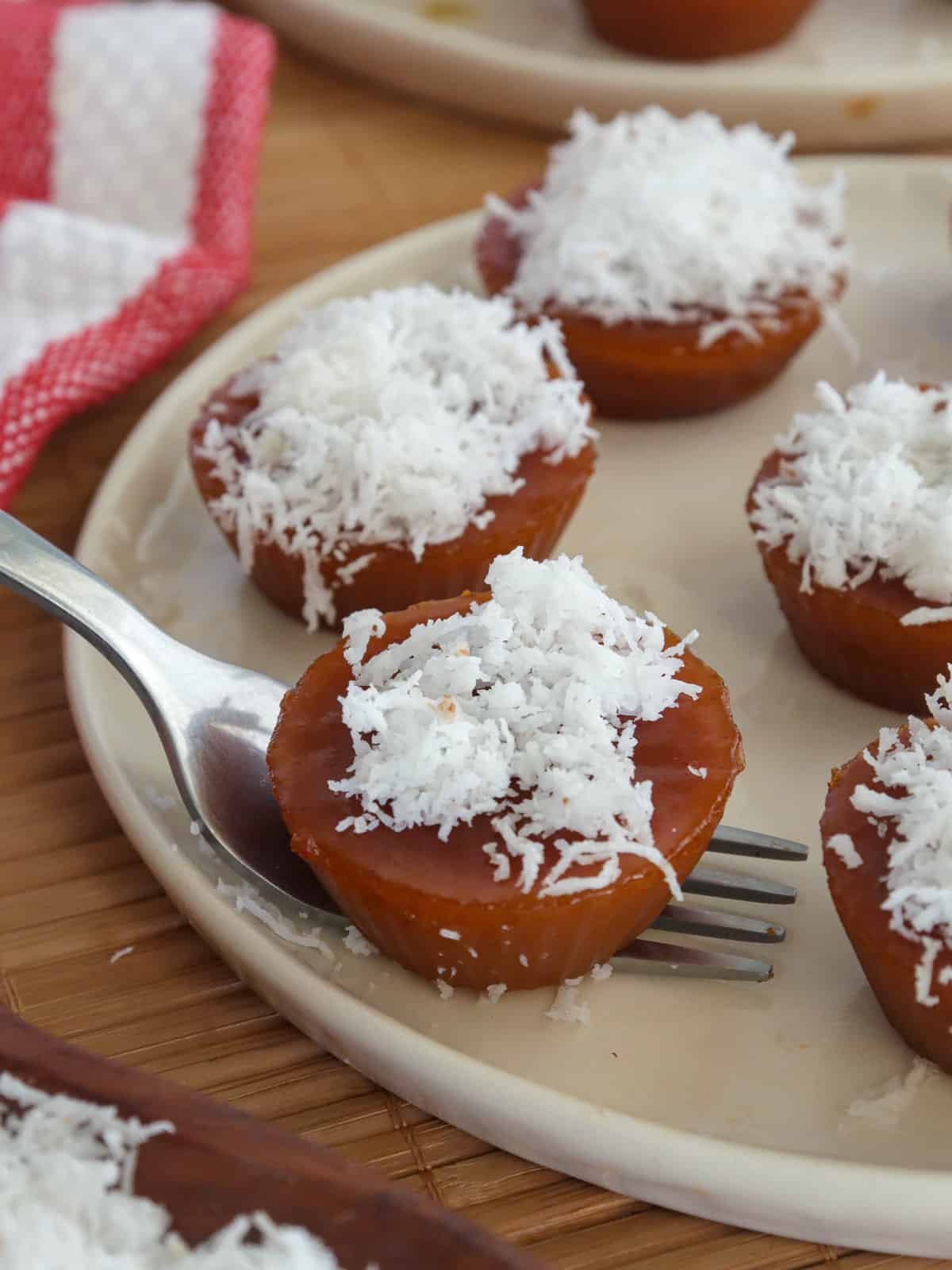
- Kutsinta are traditionally served for breakfast, midday snacks, or after-meal desserts. For a tasty treat, enjoy them with hot tsokolate or ice-cold calamansi juice!
- Top the steamed cakes with grated coconut (niyog) or toasted desiccated coconut (budbod). You can skip the coconut and dip them in dulce de leche or yema spread.
- To store, transfer to a container with a tight-fitting lid and refrigerate for up to 3 days. For longer life, top with coconut when ready to serve
More snack recipes
Ingredients
- 1 ½ cups flour
- ½ cup tapioca flour
- 1 ½ cups dark brown sugar
- 3 cups water
- 1 tablespoon atsuete powder
- 1 tablespoon lye water
Equipment
- silicone molds
- Steamer
Instructions
- In a bowl, combine flour, tapioca flour, sugar, and water. Stir well until dissolved and mixture is smooth.
- Add atsuete and stir until well dispersed and the desired color is achieved.
- Add lye water and stir.
- Fill molds to about ¾ full.
- Add water to the steamer and bring to simmer over medium heat.
- Steam kutsinta for about 40 to 45 minutes or until mixture is set. Remove from heat and allow to cool.
- Gently remove from molds and top with grated coconut.
Notes
- The atsuete is primarily added to deepen the color and you can use more or less depending on the brown sugar you use.
- If using tin molds, you might need to grease the insides to make removing the steamed cakes easy.
- Steam in a gentle simmer to prevent the kutsinta from sinking in the middle.
- These are mini-sized cuchinta; recipe yield depends on the size of molds you use.
- Stir the mixture between pouring into the molds as the flour settles in the bottom.
- Nutritional info is calculated at two pieces per serving.
Video

Nutrition Information
“This website provides approximate nutrition information for convenience and as a courtesy only. Nutrition data is gathered primarily from the USDA Food Composition Database, whenever available, or otherwise other online calculators.”

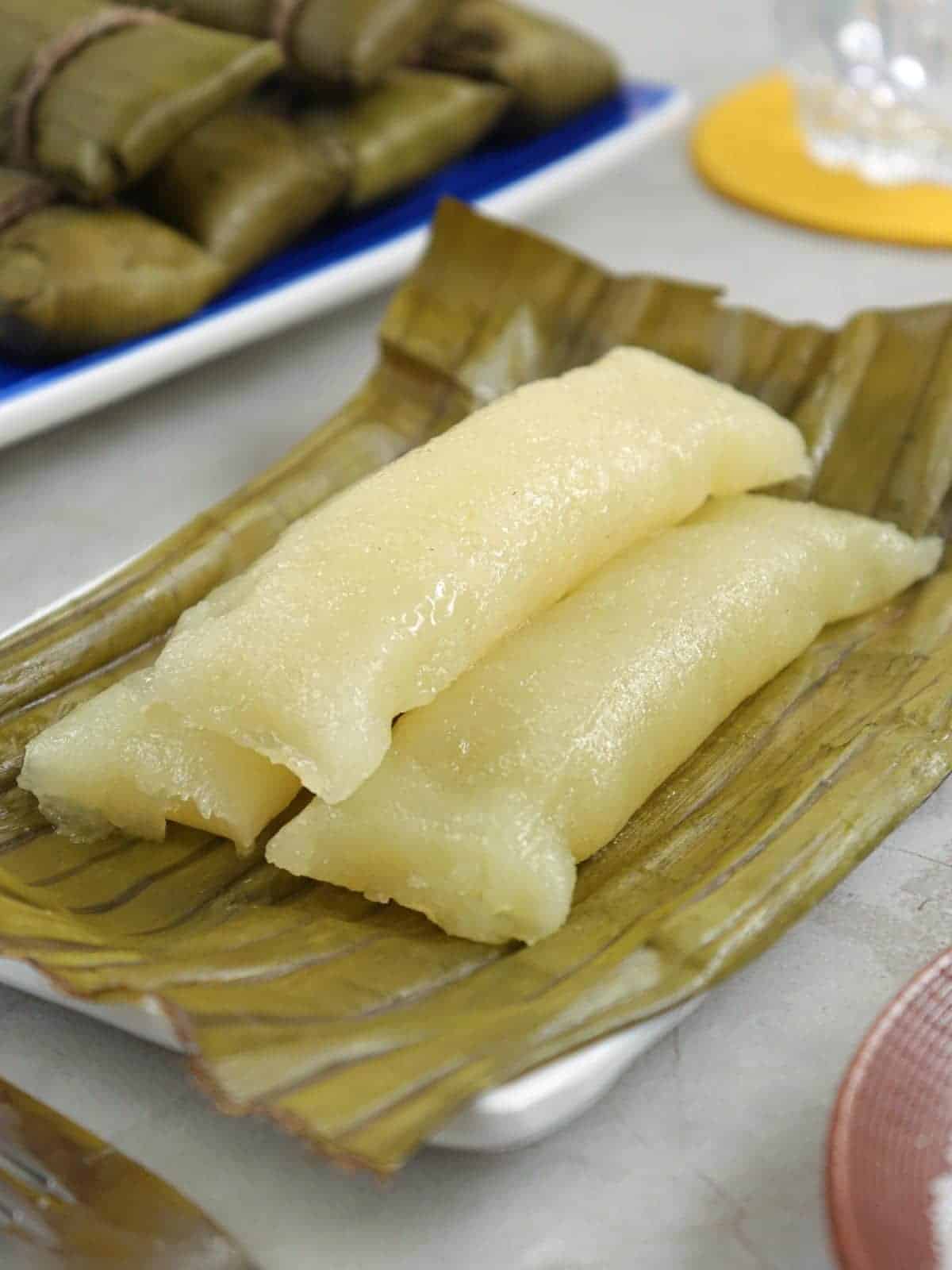
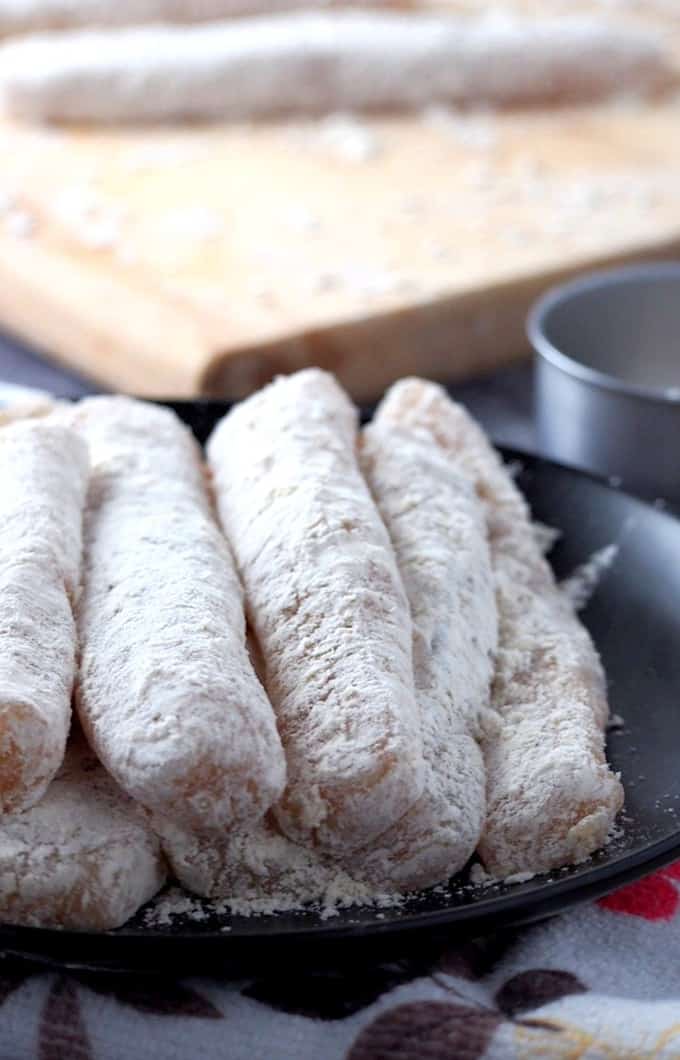
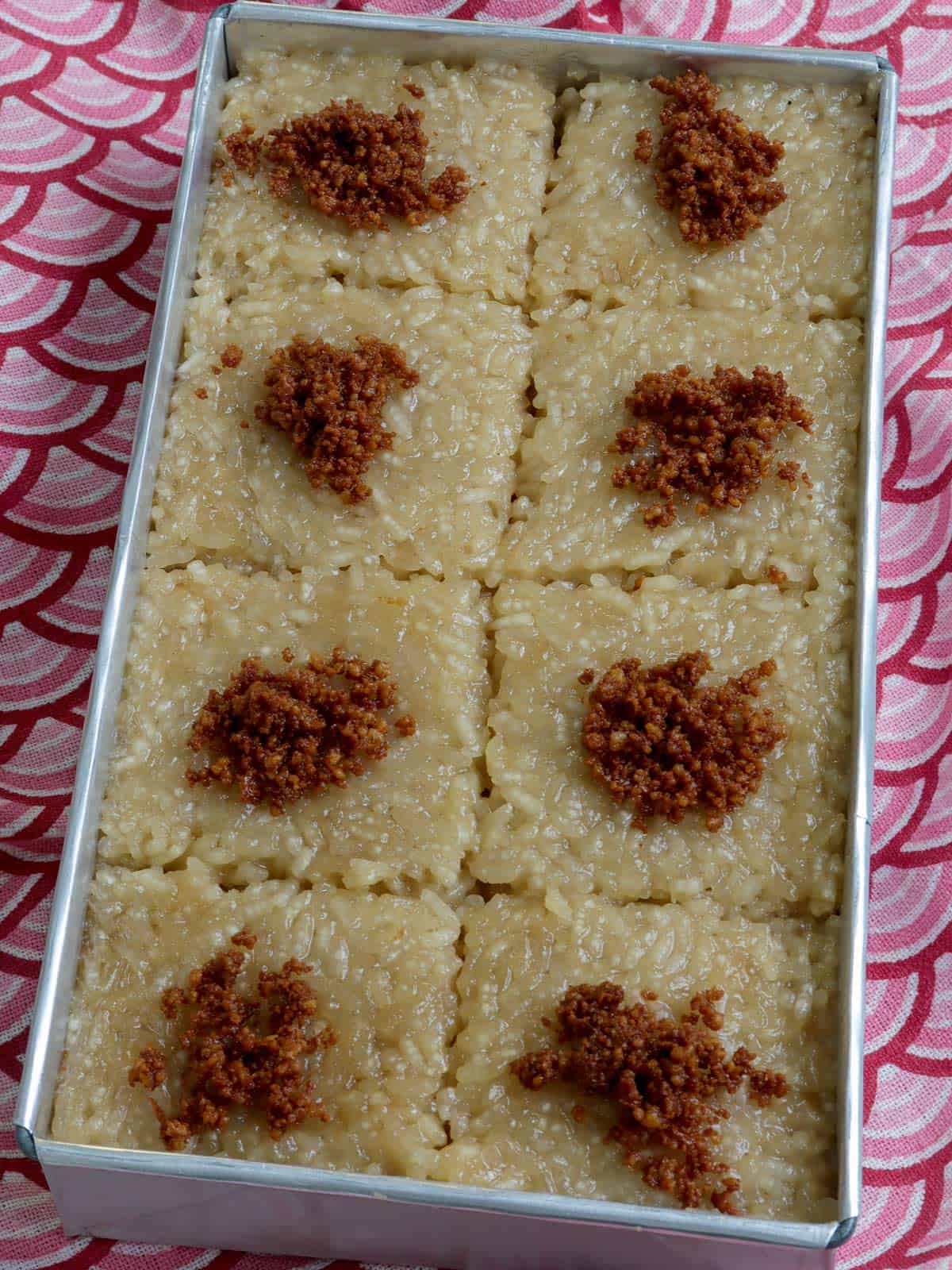
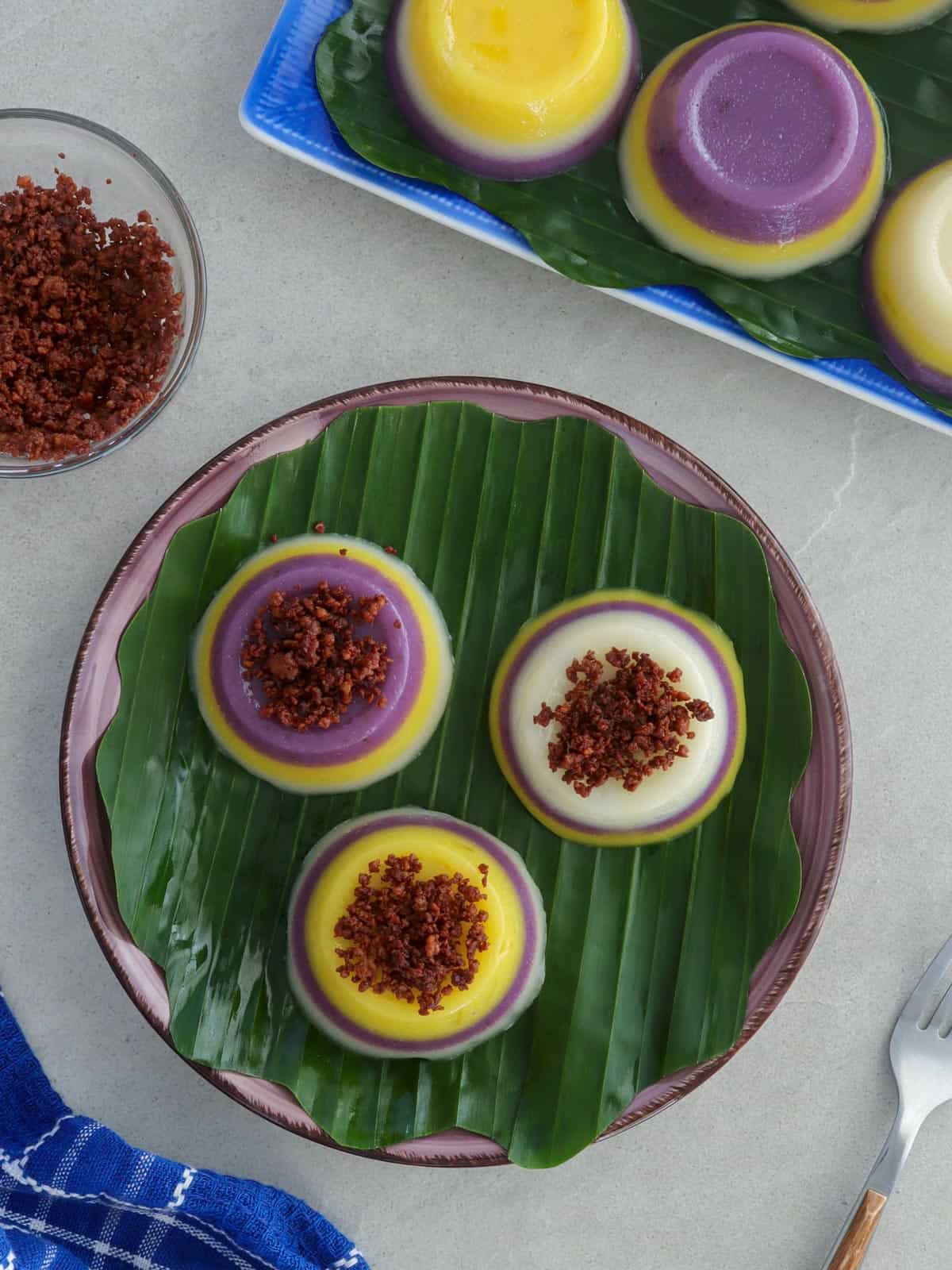
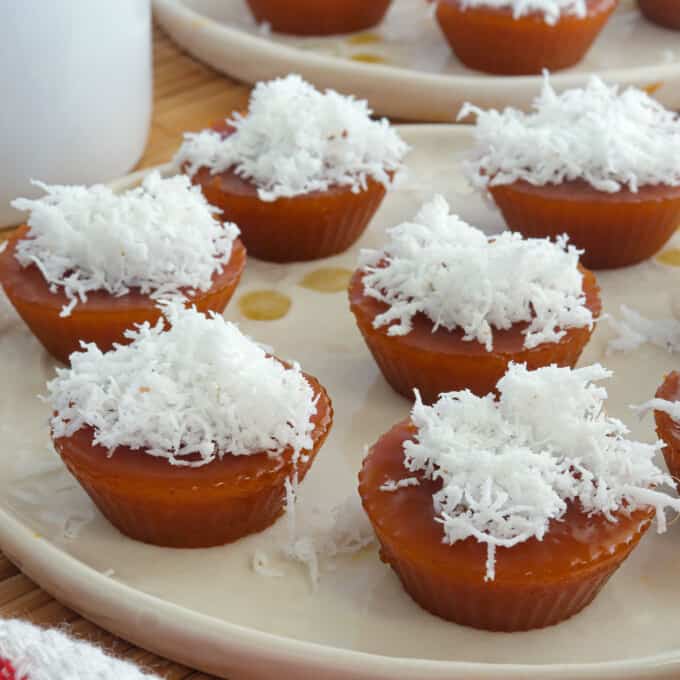
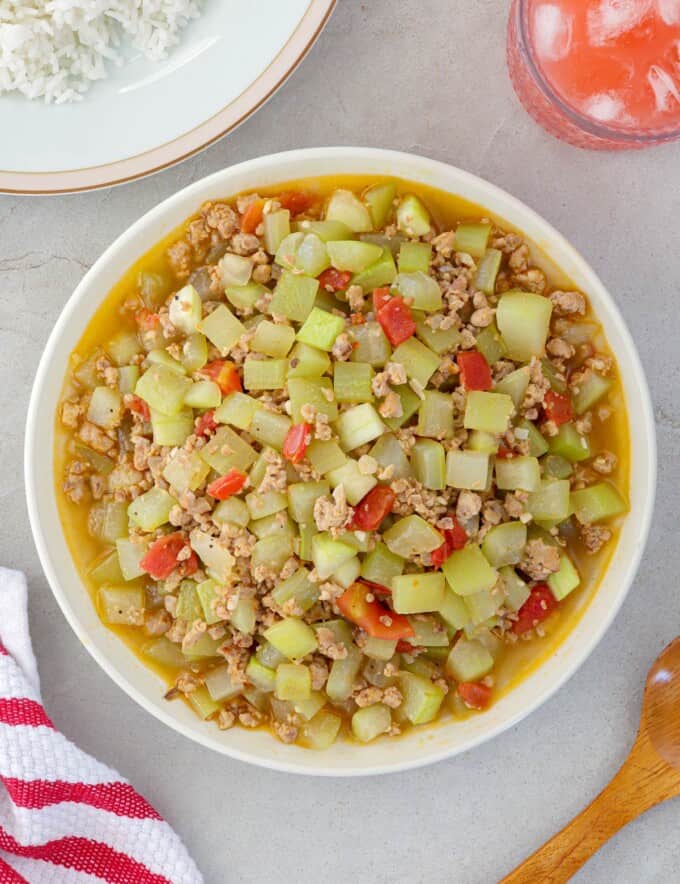
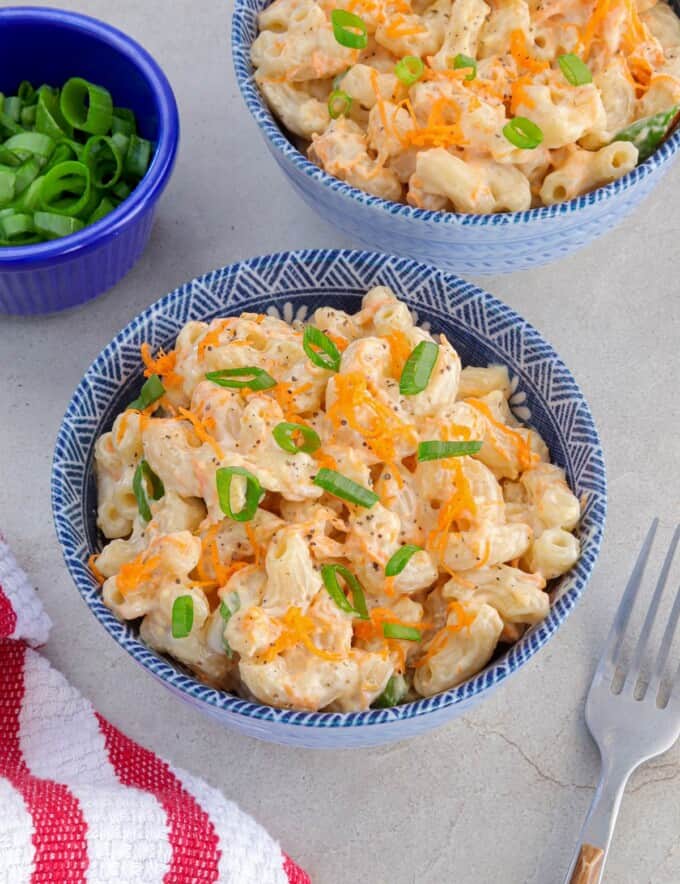
chloe says
1 tablespoon po talaga??. hindi teaspoon??..
Lalaine Manalo says
Which one po?
Jacqy says
I dont have a big steamer same as yours. I can only put 4 at a time. So does this mean i have to stEamm 4 batChes every 45 mins? Thanks
Lhynie says
Thank you very much for this recipe and tips...its so easy to follow and yummy
Lalaine Manalo says
Thanks for the 5-stars. 🙂
Cresta says
Hi! Where can i get the molds ,and what size are they?
Thanks!
Lalaine Manalo says
I ordered mine on Amazon 🙂
Switzer Torneros says
hii! did you use glutinous rice flour or judt the regular flour? thank you!
Lalaine Manalo says
It's all-purpose flour and tapioca flour 🙂
tess eugenio delacruz says
medium po ba o nasa pinaka malakas na apoy ang kailangan sa pag steam ng kutsinta?
Lalaine Manalo says
Medium heat lang po 🙂
Jennylyn Schuler says
Thank you poh sa recipe. First time ko gumawa ng kutchinta at ang sarap poh at sobrang lambot niya.
Maricris says
Mag iiba po ba pag di ko nilagyan ng lye water? Gusto ko po sana masubukan ang recipe kaso wala ako mahanapan na lye water ☹️
Lalaine Manalo says
Ang lye water po ang nagpapakunat 🙂
Joy Turingan says
Thank you for sharing. Best recipe that I’ve come across. It came out just the “chewiness” that I love!
Lalaine Manalo says
Thanks for the feedback!
Jhoanne says
Where to buy lye water?
Lalaine Manalo says
I bought mine at an Asian grocery store here in the U.S.
Benilda Sacluti says
If there is no lye water available, what's the other alternative pls. Thank you.
Joana Marie Boon says
Hi po. Just wanted to ask if tapioca flour and tapioca starch is the same? I tried searching tapioca flour in our city but all they have is tapioca starch. Hope u could help me out so i could start making this delicious kuchinta 🙂
Lalaine Manalo says
I just researched online and I guess tapioca starch and tapioca flour are the same 🙂
Gina says
thanks of your recipe.. im making it for business and sell it to my friends..
Lalaine Manalo says
Yey! I am glad this kutsinta is working well for you. Good luck with the business 🙂
sheila says
where can we get lye water? thanks
Lalaine Manalo says
I bought mine at a Filipino store in Southern California but Asian supermarkets sell it as well. You can also check Amazon 🙂
Ehlet Baltazar says
I have tried different recipes for making kutsinta and unfortunately those experiments were all a fail despite following the cooking instructions to the letter. However, when I come across your recipe, I only tried it once and it was perfect from the very start. So thank you for sharing this recipe.
Lalaine Manalo says
Thank you so much, Ehlet, for your feedback. I am glad the recipe worked well for you. Happy cooking!
gherkee says
Hi, tanong ko lng po kung may expiration b yung lye ,once na opened n yung bottle. Meron kc ako dito, bought it probably 2 years ago pero walang nksulat n expiration. Please enlighten me on this. thank you very much po. I love all your recipes. They 're all delicious and easy yung instructions.. More Power.
Vic says
How much baking soda will I use as substitute for lye water?Do I need to dilute it with water before I mix it with the rest of ingredients?I would like to try this,looks yummy.Tried your pichi pichi and it was a hit in my house.Thanks a lot.
Lalaine Manalo says
I apologize but I haven't tried using baking soda as a substitute. I am not sure how to make it work ;(
Karen says
Hello Ms. Lalaine. It’s the first time we tried cooking kutsinta and this recipe that you shared is great! I just want to ask though what other tips you have to prevent it from sinking in the middle. We tried your advise to simmer gently but most still sunk in the middle. The taste was great, perfect recipe!
Angela says
How long can you store kutsinta in the fridge?
Lalaine Manalo says
I should say about 3 to 4 days. Don't top with the grated coconut until you're ready to serve so it last longer.